
Excertos do catálogo

Solutions for a world in motion FUNCTIONAL SAFETY - SIL Electric actuators for safety-related systems up to SIL 3
Abrir o catálogo na página 1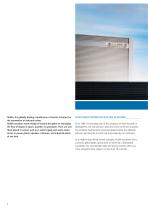
AUMA, the globally leading manufacturer of electric actuators for the automation of industrial valves. AUMA actuators work reliably all around the globe for managing the flow of liquids or gases, powders or granulates. Their use sees them placed in sectors such as in water supply and waste water sector, in power plants, pipelines, refineries, and industrial plants of any kind. YOUR EXPERT PARTNER FOR ELECTRIC ACTUATORS Since 1964, the founding year of the company, we have focused on development, the manufacture, sales and service of electric actuators. Our products have become renowned...
Abrir o catálogo na página 2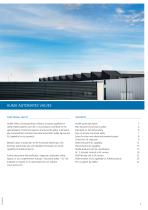
AUMA AUTOMATES VALVES functional safety AUMA offers a broad portfolio of electric actuators qualified for safety-related systems up to SIL 3. Our products contribute to the safe operation of technical systems all around the globe. Internationally renowned test institutes have determined both safety figures and SIL capability for our products. Besides a basic introduction to the functional safety topic, this brochure will provide you with detailed information on the SIL capability of AUMA products. Further documents like certificates, inspection certificates, safety figures, or our...
Abrir o catálogo na página 3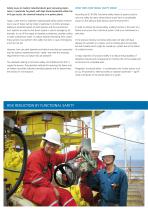
Safety issues in modern industrial plants gain increasing importance, in particular for plants with high hazard potential within the oil & gas sector, the chemical industry or in power plants. Today, a clear trend to implement sophisticated safety systems intervening in case of failure can be noted, in particular to monitor processes leading to potential hazards for both persons and the environment. Such systems are used to shut down a plant in case of emergency, for example, to cut off the supply of hazardous substances, provide cooling or open overpressure valves. To reduce hazards...
Abrir o catálogo na página 4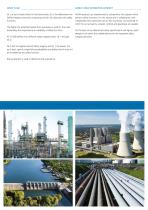
AUMA'S ROLE WITHIN THIS CONTEXT SIL is a term closely linked to functional safety. SIL is the abbreviation for Safety Integrity Level and a measuring unit for risk reduction with safety functions. AUMA products are implemented as components into systems which perform safety functions. For this reason and in collaboration with independent test authorities such as TÜV and exida, we examined of which SIL our actuators, actuator controls and gearboxes are capable. The higher the potential hazards from processes or systems, the more demanding the requirements on reliability of safety functions....
Abrir o catálogo na página 5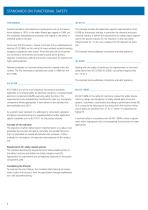
STANDARDS ON FUNCTIONAL SAFETY THE ORIGINS Industrial accidents with disastrous consequences such as the Seveso dioxin disaster in 1976, or the Indian Bhopal gas tragedy in 1984, put the worldwide standardisation processes with regard to the safety of technical systems into gear. This standard includes the application-specific implementation of IEC 61508 for the process industry, in particular the chemical and petrochemical industry. It defines the requirements for safety-related systems used in the process industry for risk reduction. It also uses safety integrity levels SIL 1 to SIL 4 as...
Abrir o catálogo na página 6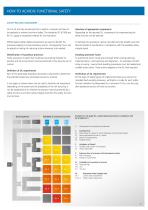
safety-related assessment_ First of all, the risks emanating from a system or process will have to be analysed to achieve functional safety. The standards IEC 61508 and 61511 supply a recognised method for risk evaluation. Differentiated safety-related assessments are used to identify the processes leading to actual hazardous events. Consequently, focus can be placed on taking risk reducing actions wherever truly needed. identification of hazardous processes Firstly, processes in plants that could lead to potential hazards for persons and the environment must be examined if they become out...
Abrir o catálogo na página 7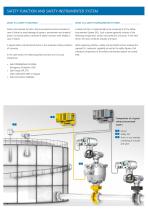
SAFETY FUNCTION AND SAFETY-INSTRUMENTED SYSTEM WHAT IS A SAFETY FUNCTION? WHAT IS A SAFETY INSTRUMENTED SYSTEM? Safety instrumented functions (SIF) are protective actions activated in case of failure to avoid damage of persons, environment and material assets. Functional safety is achieved if safety functions work reliably in case of failure. A safety function is implemented by the components of the Safety Instrumented System (SIS). Such a system generally consists of the following components: sensor, host safety PLC and actor. In the valve sector, the actor combines actuator and valve. A...
Abrir o catálogo na página 8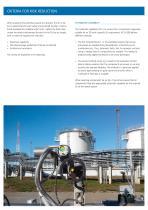
CRITERIA FOR RISK REDUCTION When analysing the potential hazards of a process, the SIL to be met is determined for each safety instrumented function. International standards IEC 61508 and IEC 61511 define the three main criteria the safety instrumented function or the SIS has to comply with to meet the required risk reduction: SYSTEMATIC CAPABILITY >> Systematic capability >> Permitted average probability of failure on demand >> Architectural constraints >> The first method (Route 1S in the standard) requires that certain procedures are heeded during development, manufacture and maintenance...
Abrir o catálogo na página 9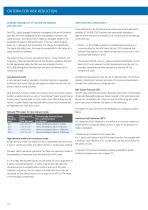
Safety integrity level Allowed PFD avg value (low demand) average probability of failure on demand (pfd and pfh) The PFDavg value (average Probability of dangerous Failure on Demand) describes the mean probability of the unavailability to perform the safety function. According to IEC 61508, an allowable range for the probability of failure is defined for each of the four safety integrity levels. SIL 1 represents the lowest level, SIL 4 being the highest level. The higher the safety level, the lower the probability for the failure of a safety function on demand. The extent of loss is not the...
Abrir o catálogo na página 10
Device type IEC 61508 distinguishes between simple and complex devices. The following parameters are required for the assessment of the different risk reduction criteria: > Simple type A elements Type A devices are "simple" units for which the failure behaviour of all components is completely known. They comprise e.g. relays, resistors and transistors, however no complex electronic components such as e.g. microcontrollers. > Complex type B devices Type B devices are "complex" units containing electronic components such as microcontrollers, microprocessors and ASICs. For these components and...
Abrir o catálogo na página 11Todos os catálogos e folhetos técnicos AUMA
-
ELECTRIC ACTUATORS
6 Páginas
-
Multi-turn actuators
92 Páginas
-
Electric multi-turn actuators
40 Páginas
-
SAEx 07.2
1 Páginas
-
Service Worldwide
8 Páginas
-
SIMA² Master Station
6 Páginas
-
AUMA Cloud + AUMA Assistant App
14 Páginas
-
AUMA Support App
4 Páginas
-
electric actuators
56 Páginas
-
FUNCTIONAL SAFETY SIL
28 Páginas
-
ELECTRIC MULTI-TURN ACTUATORS
8 Páginas
-
AUMA actuators and valve gearboxes
16 Páginas
-
Service world wide
12 Páginas
-
Part-turn actuators Generation .2
6 Páginas
-
Explosions proof actuators
24 Páginas
-
The Actuator Specialist
32 Páginas
Catálogos arquivados
-
Test bench PV 1405
24 Páginas
-
Service device PV 788 B
4 Páginas
-
Electric part-turn actuators
4 Páginas
-
Electric multi-turn actuators
28 Páginas
-
Electric multi-turn actuators
24 Páginas
-
Lever actuators SGF 05.1 - 12.1
4 Páginas
-
Multi-turn gearbox GHT 360.1
4 Páginas
-
Lever gearboxes GF 50.3 - 250.3
4 Páginas
-
Actuators with fieldbus interface
32 Páginas
-
Master station SIMA
4 Páginas



























































